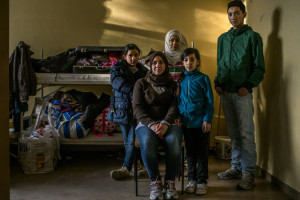Refugees being portrayed more positively – new study
A new study dissects how and why organisations choose to portray refugees and asylum seekers through images.
The analysis has revealed new insights into organisations decision making process and what they hope to achieve with particular representations.

A recently published study analyses the use of images in portraying refugees
The recently published study named ‘Dilemmas of representation: organisations’ approaches to portraying refugees and asylum seekers’ shows how organisations expect audiences to react to imagery communication.
Organisations use images to reach out to potential donors, inform their respective audiences, and demonstrate the positive impacts that the organisations’ activities have on the populations with whom they work.
The study, which was published by the Refugee Studies Centre at Oxford University, aims to understand why particular images are chosen and what those images say.
Interviews were conducted with several intergovernmental and nongovernmental organisations that range from internationally recognised to small locally based organisations.
Though the study doesn’t discuss the implications of these portrayals it does examine the reasons behind how organisations choose to represent refugees in different ways in order to fit their needs.
One of the main findings of the interviews was the tension between ethical representations of refugees and asylum seekers, and fundraising and advocacy needs.
In the humanitarian sector staff often walk along a thin moral tightrope between goals such as garnering donations for aid, and making their image subjects seemed disempowered to achieve those goals.
However, it seems that organisations are moving beyond victimising and ‘paternalistic’ attitudes that were common place in the past.
After the exploitative nature of some images, organisations are constantly struggling to find the balance between reaching their audience and representing the image subjects as full agents.
The study found that organisations have indeed made the shift to portray refugees as empowered rather than disenfranchised.
“Interviews revealed a shift, evident in the way in which organisations create and distribute images from ‘acting on’ to ‘acting with’ refugees and asylum seekers as organisations seek to incorporate beneficiaries as agents in their campaigns,” said the authors of the study.
This shift came from organisations relationships with refugees changing, as well as the way in which organisations create a public identity and constitute themselves as ‘brands’.
“The relationship between organisations and the subjects of the images they use is in some respects one of exchange, constituting organisations’ beneficiaries as agents participating in a reciprocal relationship.”
“Organisations generally seek to convey more active and optimistic images of refugees and asylum seekers, for both ethical and strategic reasons.”
Ruby Brown
AMES Australia Staff Writer












